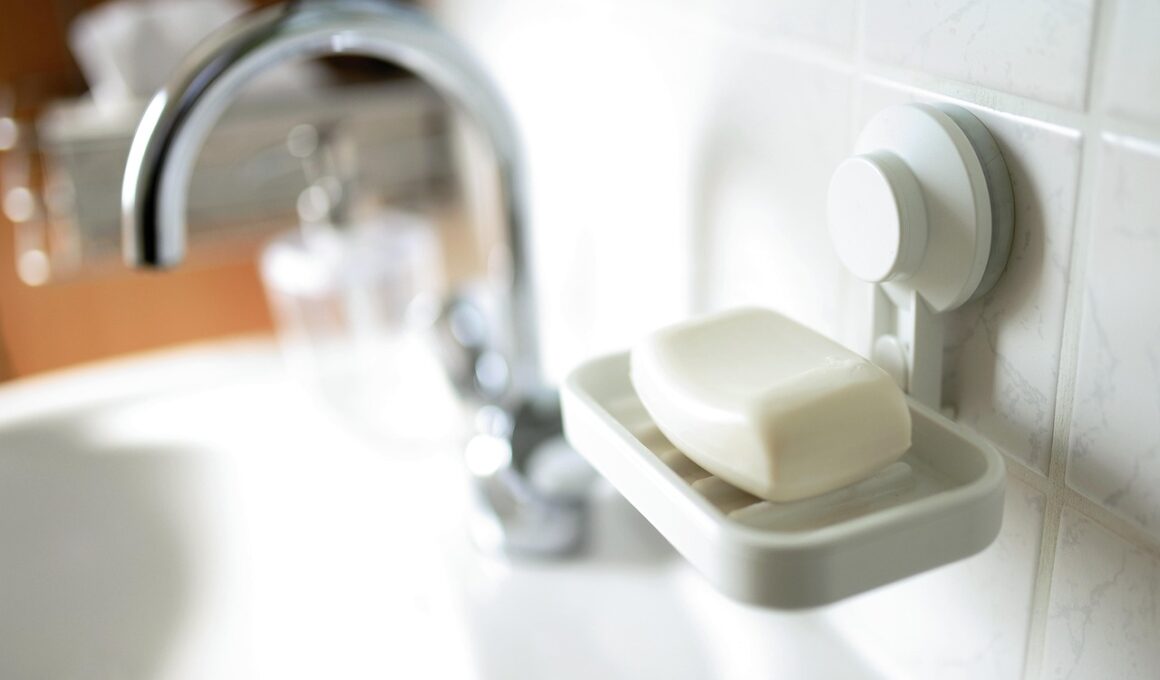How Gym Design Can Encourage Cleaner Workout Spaces
A well-designed gym has the potential to create an environment that promotes cleanliness and encourages members to take responsibility for their surroundings. By evaluating how space is utilized and the materials selected, gym management can assist in setting the right standard. High-quality materials like antimicrobial surfaces can help mitigate the spread of germs. Thoughtful layout designs that include sufficient spacing allow for easier access to cleaning stations and storage for personal items. Additionally, designing workout areas that minimize clutter can help members stay focused. Designed pathways are also essential to promote flow and prevent congested areas, ensuring members can move freely without creating messes. In a well-organized gym, cleanliness can become a cultural norm that gym-goers naturally adopt. Wellness is about more than just body image; it encompasses mental well-being also. Clean spaces contribute to positive feelings, elevating the overall workout experience. To reinforce these behaviors, gyms should consistently communicate important policies and provide clear signage around each area. These strategies will foster a strong commitment to cleanliness and health, enhancing the gym environment and promoting long-term member satisfaction.
Gym cleanliness is essential for maintaining a healthy environment. Effective gym design can support this by integrating essential features like cleaning stations and waste disposal areas. First, centrally locating sanitizing stations encourages members to wipe down equipment before and after use. Utilizing high-visibility colors can also remind members to utilize these stations! Providing easy access to an ample number of dispensers helps ensure that gym-goers have active strategies for promoting hygiene. Additionally, waste bins should be conveniently positioned throughout the gym to keep the space organized. Strategically placing these bins near workout stations will help in reducing clutter. Implementing clear visual signage about cleanliness practices is crucial. Visual reminders can help reinforce norms and encourage adherence to proper cleaning protocols. Moreover, regular maintenance schedules should be established to ensure that all equipment and areas are consistently cleaned. This not only promotes member satisfaction but also prolongs the longevity of gym equipment. Regular reminders through newsletters or digital screens about the importance of cleanliness in the gym can further solidify these practices. Altogether, these combined efforts promote cleanliness as a shared responsibility and foster a more enjoyable workout experience.
Creating a clean gym environment without overwhelming users can sometimes be challenging. Optimizing design aspects of the facility—such as the choice of flooring, lighting, and ventilation—can contribute positively to cleanliness perceptions. For instance, using non-porous flooring materials can make cleaning quicker. Additionally, a well-illuminated gym creates a welcoming atmosphere and helps members notice when items are out of place or require maintenance. Furthermore, proper ventilation not only improves air quality but also helps minimize moisture, which can promote growth of mold and bacteria. Efficient airflow systems can significantly reduce lingering odors. Workstations and cleaning supplies should be visible and accessible, reminding users of their commitment to keeping the gym orderly. The array of fitness equipment should be adequately spaced to prevent overcrowding, making it easier to clean between use. An open gym layout encourages a free flow, allowing for maximum visibility across the workout space. Users should feel empowered to hold one another accountable for cleanliness, fostering a sense of community centered around shared expectations. This sense of shared responsibility cultivates a healthier community environment, promoting long-term member engagement and loyalty.
Community Engagement and Cleanliness
Promoting a culture of cleanliness and respect for shared spaces can foster better community engagement among gym-goers. When participants feel like they are part of a team, they are more likely to participate in group efforts, such as cleanliness routines. To build this sense of community, gyms should frequently host workshops or events focused on best practices for gym hygiene and ergonomics. Encouraging member feedback on cleanliness can help management understand concerns effectively, fostering active participation in maintaining a clean environment. Creating an incentive program for those who demonstrate exceptional efforts in promoting cleanliness can also encourage consistent engagement. Implementing a reward system—such as discounts or free classes—for members who take time to clean equipment can boost their morale. Organizing social media campaigns where members post about their commitment to cleanliness can also generate awareness. Creating designated cleaning days can promote camaraderie among users, transforming cleaning maintenance into a community event rather than just an obligation. Ultimately, fostering this collective responsibility contributes to a healthier gym atmosphere and reinforces a supportive and positive experience for everyone involved.
Personal accountability is a crucial aspect of promoting hygiene in the gym. Each member must understand their role in keeping shared spaces clean and pleasant. Design improvements can simplify personal accountability by integrating user-friendly features into the gym architecture. For example, equipping machines with clearly indicated cleaning materials can remind users to wipe down after use. Designs that accommodate individual spacing for personal items also help in maintaining a tidy environment. Visibility within the gym can encourage members to keep the space orderly. When each member can see how actions impact the communal environment, they may be more likely to act responsibly. Alongside visible cleaning stations, providing ample signage reinforces the importance of personal responsibility in maintaining cleanliness. Online portals may also facilitate tracking personal progress, promoting healthy habits that extend beyond the gym walls. Members may, for instance, track how often they clean the equipment they use. Sharing personal cleaning goals can create friendly competition among gym users. This approach builds relationships and increases motivation while helping establish community cleanliness norms. Engaging members in these dynamics will promote shared ownership of gym cleanliness, enhancing overall satisfaction and performance.
Innovative Technology Solutions
Incorporating innovative technology solutions in gym design can greatly enhance health and cleanliness measures. Automated cleaning systems can offer an efficient way to maintain shared equipment and spaces with minimal effort. For example, self-cleaning machines, while still relatively rare, are increasingly popular, which allow users to sanitize equipment effectively and safely without considerable labor. Users can trust these machines to uphold standards. Additionally, implementing smart technology can monitor cleaning schedules, ensuring high-traffic equipment is consistently maintained. Integration of mobile applications to remind users about hygiene practices fosters awareness of cleanliness in real-time. Apps that provide members with access gauges around equipment cleanliness can encourage greater daily accountability. Moreover, employing UV light sanitization technologies offers effective solutions to combat germs after peak usage hours, further reassuring users regarding hygiene. These technological advancements not only keep the gym cleaner but also actively contribute to member peace of mind regarding health and safety. As gyms continue to innovate, future designs that utilize advanced technologies will likely foster improved cleanliness and user satisfaction. Ultimately, these tech solutions enhance gym experiences, leading to long-term investment in personal health and fitness.
In summary, effective gym design plays a vital role in encouraging cleanliness among members. Thoughtful integration of cleaning stations, adequate lighting, and appropriate spacing of equipment fosters a sense of personal accountability and community engagement. Implementing technology solutions enhances efficiency in maintaining cleaner and healthier environments. When gym-goers understand their collective responsibility, they are more likely to contribute positively to the overall atmosphere. Regular engagement through workshops, events, and feedback mechanisms can promote active participation among members. Cleanliness becomes not merely a chore, but a shared value integrated into the gym culture. Building relationships among users can solidify accountability, motivating everyone to uphold high standards of hygiene. The design of a gym can inspire members through its layout and features, transforming routine activity into a motivating experience. Clean spaces cultivate positive feelings and drive successful workouts, fostering a supportive environment. This dedication to cleanliness will not only lead to increased member satisfaction but will also set the standard for gyms everywhere. By prioritizing cleanliness, gym facilities can enhance their reputation while promoting healthier lifestyles for their patrons.


